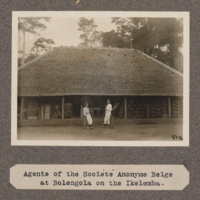
Haya
There are an estimated 4,000 people living in modern slavery in Qatar (GSI 2018). Qatar is a destination country for men and women subjected to forced labour and, to a much lesser extent, forced prostitution. Men and women from Nepal, India, Pakistan, Bangladesh, the Philippines, Indonesia, Sri Lanka, Sudan, Kenya, Nigeria, Uganda, and other countries voluntarily migrate to Qatar as unskilled laborers and domestic workers, often paying illegal and exorbitant fees to unscrupulous recruiters in the labour-sending countries, thereby increasing their vulnerability to debt bondage. Some workers subsequently face conditions indicative of involuntary servitude, to include restricted movement, payment withholding, passport confiscation, exit permit retention, and threats of deportation or abuse. Individuals in Qatar sell visas to migrants and occasionally demand regular payments, enabling migrant workers to work illegally and without legal recourse against their respective sponsors, although reportedly this trend is on the decline. Haya* travelled to Qatar for work but found herself trafficked into domestic service where she also experienced sexual abuse, beatings, and restrictions to her movement.

Lakshmi
There are an estimated 4,000 people living in modern slavery in Qatar (GSI 2018). Qatar is a destination country for men and women subjected to forced labour and, to a much lesser extent, forced prostitution. Men and women from Nepal, India, Pakistan, Bangladesh, the Philippines, Indonesia, Sri Lanka, Sudan, Kenya, Nigeria, Uganda, and other countries voluntarily migrate to Qatar as unskilled laborers and domestic workers, often paying illegal and exorbitant fees to unscrupulous recruiters in the labour-sending countries, thereby increasing their vulnerability to debt bondage. Some workers subsequently face conditions indicative of involuntary servitude, to include restricted movement, payment withholding, passport confiscation, exit permit retention, and threats of deportation or abuse. Individuals in Qatar sell visas to migrants and occasionally demand regular payments, enabling migrant workers to work illegally and without legal recourse against their respective sponsors, although reportedly this trend is on the decline. Lakshmi was trafficked from India to Qatar into domestic servitude, the age of 24. She was sexually abused and beaten by her employers who took away her documents. When she asked to go back to India she was told she would have to pay. The harassment continued until her case was taken up by the Indian embassy in Qatar.

Srijan
There are an estimated 212,000 people living in modern slavery in Malaysia (GSI 2018). The majority of those exploited are migrant and undocumented workers in the country. Foreign workers constitute more than 20 percent of the Malaysian workforce and typically migrate voluntarily—often illegally—to Malaysia from Bangladesh, India, Nepal, Burma, Indonesia, the Philippines, and other Southeast Asian countries, mostly in pursuit of better economic opportunities. Some of these migrants are subjected to forced labour or debt bondage by their employers, employment agents, or informal labour recruiters when they are unable to pay the fees for recruitment and associated travel. Srijan, a 28-year-old man who was working on a flower farm in the Cameron Highlands, compared what his agent had told him with what he found when he began work.

Niaz
There are an estimated 212,000 people living in modern slavery in Malaysia (GSI 2018). The majority of those exploited are migrant and undocumented workers in the country. Foreign workers constitute more than 20 percent of the Malaysian workforce and typically migrate voluntarily—often illegally—to Malaysia from Bangladesh, India, Nepal, Burma, Indonesia, the Philippines, and other Southeast Asian countries, mostly in pursuit of better economic opportunities. Some of these migrants are subjected to forced labour or debt bondage by their employers, employment agents, or informal labour recruiters when they are unable to pay the fees for recruitment and associated travel. Niaz, a 36-year-old Bangladeshi man, was promised work and a good wage in Malaysia by an agent. Upon arrival he was paid basic salary and did not know how he was ever going to get his money back.

Shamshad
There are an estimated 212,000 people living in modern slavery in Malaysia (GSI 2018). The majority of those exploited are migrant and undocumented workers in the country. Foreign workers constitute more than 20 percent of the Malaysian workforce and typically migrate voluntarily—often illegally—to Malaysia from Bangladesh, India, Nepal, Burma, Indonesia, the Philippines, and other Southeast Asian countries, mostly in pursuit of better economic opportunities. Some of these migrants are subjected to forced labour or debt bondage by their employers, employment agents, or informal labour recruiters when they are unable to pay the fees for recruitment and associated travel. Shamshad travelled to Malaysia for work through an agent. Upon arrival he was taken to work at a timber factory where he was to be paid less than half what was promised. After two months the employer told Shamshad and fifty other workers to leave as there was no more work. They were not paid for their labour. The same agent found a new job elsewhere and Shamshad’s passport was withheld, leaving him unable to go back home.

Mostafa
There are an estimated 212,000 people living in modern slavery in Malaysia (GSI 2018). The majority of those exploited are migrant and undocumented workers in the country. Foreign workers constitute more than 20 percent of the Malaysian workforce and typically migrate voluntarily—often illegally—to Malaysia from Bangladesh, India, Nepal, Burma, Indonesia, the Philippines, and other Southeast Asian countries, mostly in pursuit of better economic opportunities. Some of these migrants are subjected to forced labour or debt bondage by their employers, employment agents, or informal labour recruiters when they are unable to pay the fees for recruitment and associated travel. Mostafa, a 23-yr old from Bangladesh, travelled to Malaysia for work through an agent. He worked in a furniture factory for four or five months before his agent moved him to a hostel to wait for more work. He and the other workers had their relatives wire money so they could cover their living expenses during the time they were out of work. 30 workers shared quarters near the factory in Klang.

Ashraf
There are an estimated 212,000 people living in modern slavery in Malaysia (GSI 2018). The majority of those exploited are migrant and undocumented workers in the country. Foreign workers constitute more than 20 percent of the Malaysian workforce and typically migrate voluntarily—often illegally—to Malaysia from Bangladesh, India, Nepal, Burma, Indonesia, the Philippines, and other Southeast Asian countries, mostly in pursuit of better economic opportunities. Some of these migrants are subjected to forced labour or debt bondage by their employers, employment agents, or informal labour recruiters when they are unable to pay the fees for recruitment and associated travel. Ashraf and six other workers travelled to Malaysia from Bangladesh after they were given three-year contracts to work with a company at a wage of 30 ringgit ($8.75) per day. His passport was taken and upon arrival he was told the job he had been promised did not exist.

Hussain
There are an estimated 212,000 people living in modern slavery in Malaysia (GSI 2018). The majority of those exploited are migrant and undocumented workers in the country. Foreign workers constitute more than 20 percent of the Malaysian workforce and typically migrate voluntarily—often illegally—to Malaysia from Bangladesh, India, Nepal, Burma, Indonesia, the Philippines, and other Southeast Asian countries, mostly in pursuit of better economic opportunities. Some of these migrants are subjected to forced labour or debt bondage by their employers, employment agents, or informal labour recruiters when they are unable to pay the fees for recruitment and associated travel. Husain travelled to Malaysia through an agent in search of work to help support his family. Upon arrival, he was taken to a holding area at the airport with up to 200 other people. The next day the employer came, and Husain was taken to a house where he was kept for a further six days and his passport was confiscated. When the employer returned, he told the people to leave and find their own work and Husain had to buy his passport back to return home.

Revathi
There are an estimated almost 8 million people living in modern slavery in India (GSI 2018). India has a population of more than 1.3 billion people, there are still at least 270 million people living on less than US$1.90 per day. While laws, systems and attitudes regarding key 'fault lines' such as the caste system, gender and feudalism are rapidly changing, social change of this depth and scale necessarily takes time. In this context, it is perhaps unsurprising that existing research suggests that all forms of modern slavery continue to exist in India, including forced labour. Young women and girls, often from lower castes, are exploited in Indian spinning mills. They are contracted for three or more years to work in the textile factories of southern India and do not receive minimum wage. At the end of the contract, workers receive a premium, but that is often not the amount promised. This form of exploitation was called Sumangali (Happy Bride), because the premium was supposed to serve as the bride price. While the spinning mills no longer advertise this kind of work under this slogan, the practice continues. Revathy went to work at a spinning mill after his parents could no longer afford her education. She was hired by an agent who offered food, accommodation and salary for an eight-hour working day. However, upon arrival, Revathy was forced to work long hours in unsafe conditions and had her pay deducted for the food and accommodation she was promised. She recounts the working conditions and illnesses workers developed in the mill.

Indrani P.
There are an estimated 61,000 people living in modern slavery in Saudi Arabia (GSI 2018). It is a source and destination country for men and women trafficked from South and South East Asia and Africa. People voluntarily migrate to the country to work in a variety of sectors including construction and domestic service; many of these workers are vulnerable to forced labour. Traffickers and brokers often illegally recruit migrants to work in Saudi Arabia and subsequently forced them into domestic servitude or debt bondage. Female domestic workers are particularly at risk of trafficking due to their isolation inside private residences. Non-payment or late payment of wages remains a complaint from foreign workers, while employer's withholding of worker's passports remains a significant problem. Trafficking perpetrators include businesses of all sizes, private families, recruitment companies in both Saudi Arabia and labor-sending countries, and organized criminal elements. Sri Lankan domestic worker Indrani P. thought she was travelling to Dubai for work. Instead an agent took her to Riyadh where her employers beat and threatened her daily and withheld her salary.

Chidi
There is an estimated 48,000 people living in modern slavery in Libya (GSI 2018). Libya is a major transit destination for migrants and refugees hoping to reach Europe by sea. Human trafficking networks have prospered amid lawlessness, created by the warring militias that have been fighting for control of territories since the toppling of Muammar Gaddafi in 2011. Highly organized trafficking and migrants smuggling networks that reach into Libya from Niger, Nigeria, Chad, Eritrea, Ethiopia, Somalia, Sudan, and other sub-Saharan states subject migrants to forced labor and forced prostitution through fraudulent recruitment, confiscation of identity and travel documents, withholding or non-payment of wages, debt bondage, and verbal, physical, and sexual abuse. In some cases, migrants reportedly pay smuggling fees to reach Tripoli, but once they cross the Libyan border they are sometimes abandoned in southern cities or the desert where they are susceptible to severe forms of abuse and human trafficking. Chidi was trafficked in Libya on his way to France. When his friend failed to pay the $3,000 fee to smugglers, he was locked up and tortured. Though his family took out loans to pay of his 'debt', he was later kidnapped and imprisoned once again. Chidi received support from Programme X including counselling, financial assistance and business skills training. He went on to set up a retail unit selling women’s accessories.

BL
There are an estimated 10,000 people living in modern slavery in Hong Kong (GSI 2018). Approximately 370,000 foreign domestic workers, primarily from Indonesia and the Philippines, work in Hong Kong; some become victims of forced labour in the private homes in which they are employed. An NGO report released in 2016 estimated as many as one in six foreign domestic workers is a victim of labour exploitation. Employment agencies often charge job placement fees in excess of legal limits, and sometimes withhold identity documents, which may lead to situations of debt bondage of workers in Hong Kong. The accumulated debts sometimes amount to a significant portion of the worker’s first year salary. Some employers or employment agencies illegally withhold passports, employment contracts, or other possessions until the debt is paid. Some workers are required to work up to 17 hours per day, experience verbal, sexual or physical abuse in the home, and/or are not granted a legally required weekly day off. BL, an Indonesian migrant domestic worker in Hong Kong
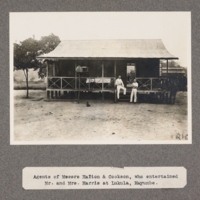
Agents of Messrs. Hatton & Cookson, who entertained Mr. and Mrs. Harris at Lukula, Mayumbe
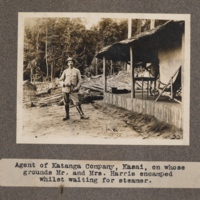
Agent of Katanga Company, Kasai, on whose grounds Mr. and Mrs. Harris encamped whilst waiting for steamer
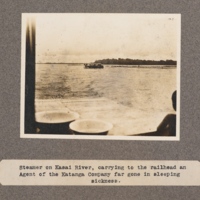
Steamer on Kasai River, carrying to the railhead an agent of the Katanga Company far gone in sleeping sickness
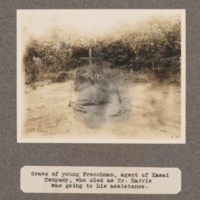
Grave of young Frenchman, agent of Kasai Company, who died as Mr. Harris was going to his assistance

Agent of Kasai Company in his garden at Bashishombe
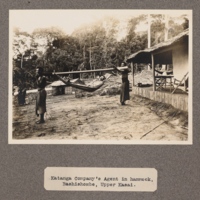
Katanga Company's agent in hammock, Bashishombe, upper Kasai
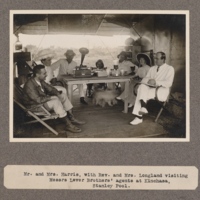
Mr. and Mrs. Harris, with Rev. and Mrs. Longland visiting Messrs. Lever Brothers' agents at Kinchasa, Stanley Pool
